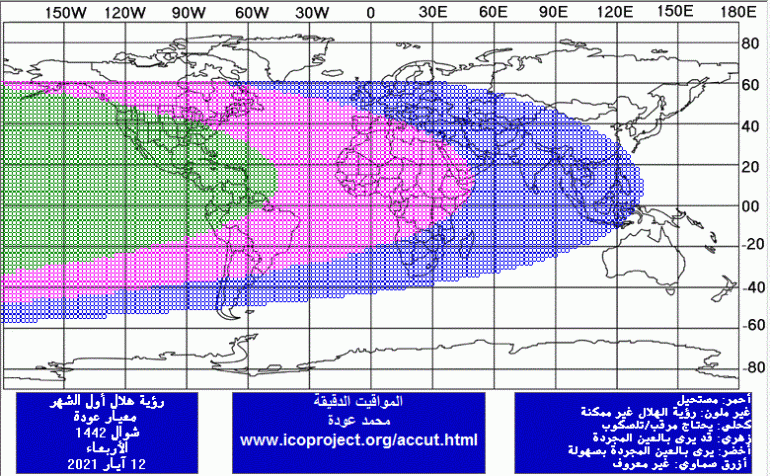Days passed quickly, and here we are at the end of the blessed month of Ramadan, and everyone is wondering about the date of Eid al-Fitr this year, and will the Arab countries agree on it or will it differ, as happened in the case of Ramadan?
Moment of pairing
To understand the astronomical idea of surveying the new moons of the Hijri months, let's start from the moment of conjunction, which is the moment when the moon passes next to the sun in the sky, and it occurs during the day, of course, and we cannot see it, but astronomers can calculate it.
From our perspective on the earth, the moon - which revolves around the sun once every about 28 days - appears to pass by the sun, but what really happens is that the sun is very far away, at a distance of about 150 million kilometers, while the moon revolves around the earth at a distance of about 400 Only a thousand kilometers.
The conjugation takes place after the sighting date on Tuesday evening, so it is Wednesday complete (International Astronomy Center)
After the moment of conjunction occurs, the moon continues to move away from the sun in the sky, and after half a day to a day a crescent moon may appear to us in the night sky, because it is completely far from the sunlight, so it sets and leaves it illuminated.
When the legal teams specialized in searching for the crescent come out, because the sighting is the criterion of the beginning of the Hijri months in the Islamic religion, the two things usually agree, meaning that the conjugation occurs before or during the day on the day of sighting, then they go out after sunset to observe the crescent that is slightly away from the sun.
When is the feast?
But this year, most Arab countries will go out to search for the crescent after sunset on the 29th of Ramadan, corresponding to Tuesday, May 11, but the conjunction will originally happen, astronomically, at exactly 22:00 pm Mecca time this day.
This means that it is impossible for specialized teams to see the crescent, because it has not yet been associated with the sun, and therefore May 12 will complement the month of Ramadan, and May 13 is the first of Shawwal and the first day of Eid al-Fitr without a doubt.
When the crescent is seen on Wednesday evening, enough time has passed to allow the crescent to be seen, so Thursday will be the day of Eid (International Astronomy Center)
As for other countries, such as the Sultanate of Oman and the Kingdom of Morocco, they fasted a day later than the rest of the Arab countries, which means that the Sharia teams will go out on Ramadan 29 (corresponding to May 12).
According to the International Astronomy Center, the sighting of the crescent is possible for the naked eyes in these countries, which means that it will most likely announce on May 12 the end of Ramadan, and the first day of the blessed Eid al-Fitr will be on May 13, so all Arab countries will agree together suddenly Shawwal this year.

